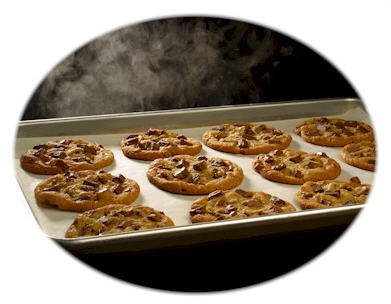 Overview
Overview
As there are many types of cookies and crackers, the exact manufacturing processes differ greatly from plant to plant. Below is an example of a cookie manufacturing process:
Basic ingredients are combined in a large mixing bowl that can hold up to 2000 lbs of dough. Large mixers blend the ingredients. The sides of the mixing bowl must be scraped clean of dough manually. Special ingredients, such as oats or chocolate chips, are now added to the mixing bowl. The batch is mixed again, and the bowl is once again scraped. An optional third mixing would occur after adding additional flour and water to slightly alter the dough’s consistency. The dough is poured into a hopper that squeezes dough through small openings in the bottom. A blade slices off the correct amount of dough, which drops onto a conveyor belt underneath. The cookies are conveyed through a series of ovens with different heating zones, often ranging from 350º-500º F (176.7º-260º C). The cookies are cooled using cool air upon removal from the oven. The cookies are then packaged, or icing or cream may be added before packaging. (Royal Cake)
Major Processes
Large bakery processes use continuous tunnel ovens. Small bakeries use deck and convection ovens to produce products in batches.
Major Equipment
Natural Gas Technologies
More Information
www.sentech.org/CHP4foodprocessing/bakeries.htm
American Institute of Baking (AIB) International www.aibonline.org
